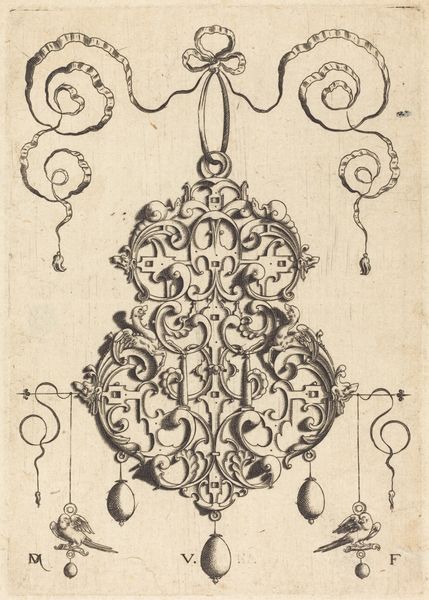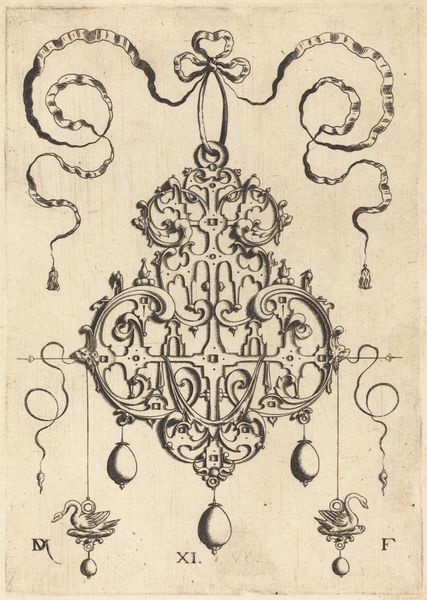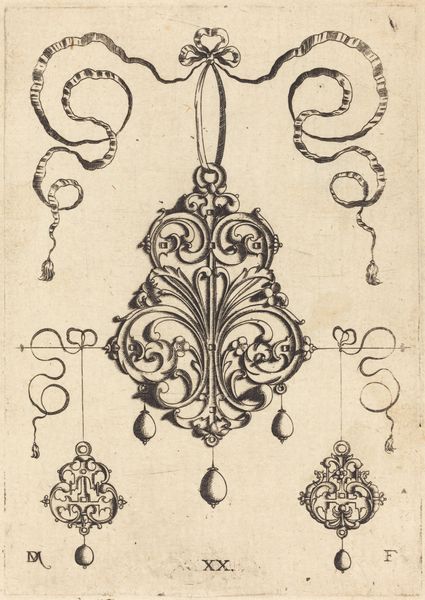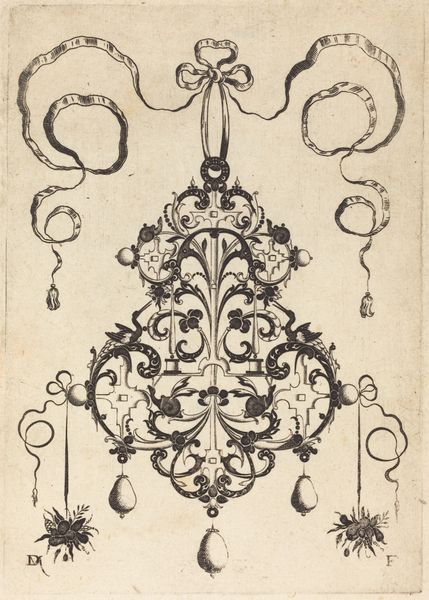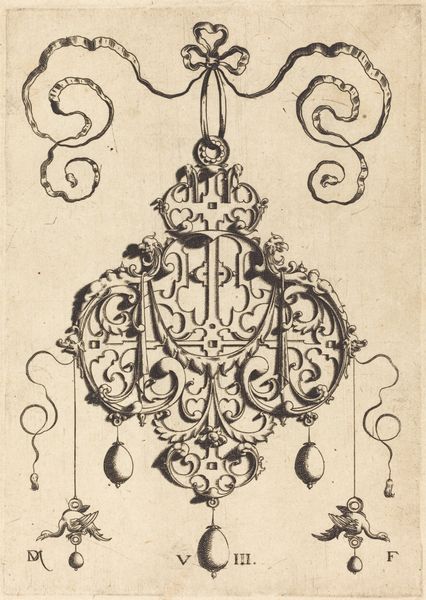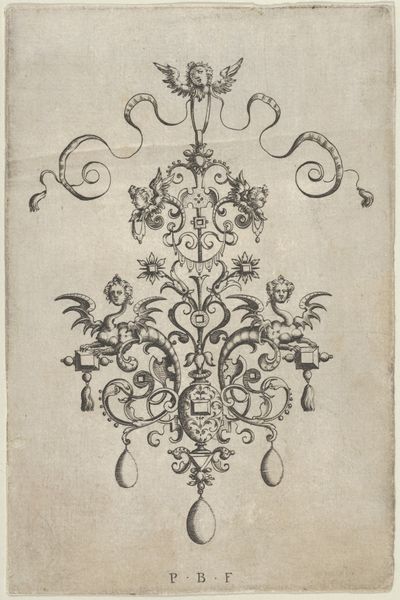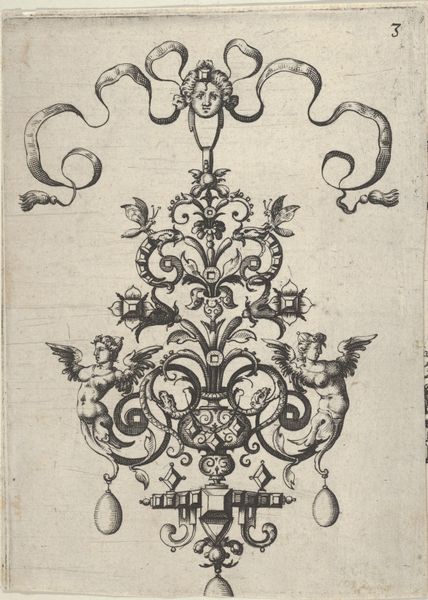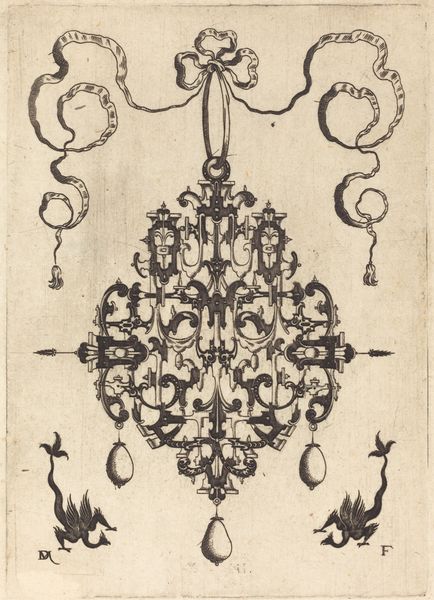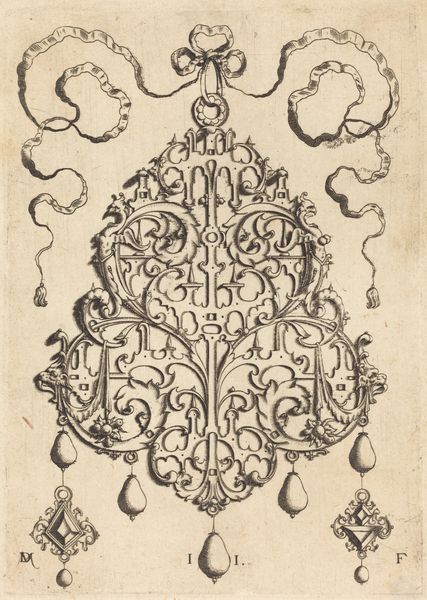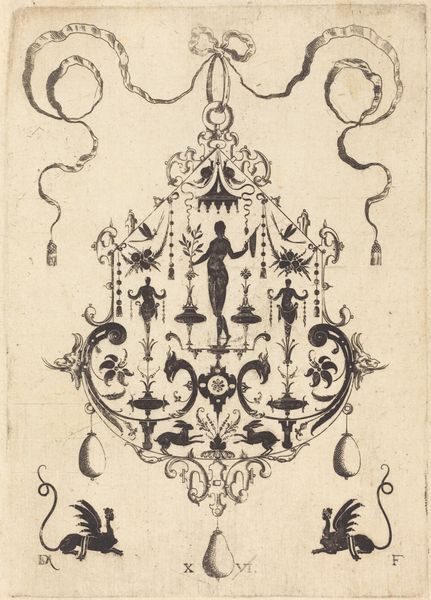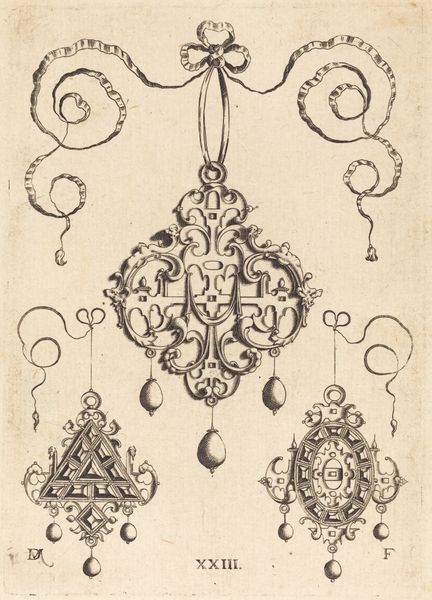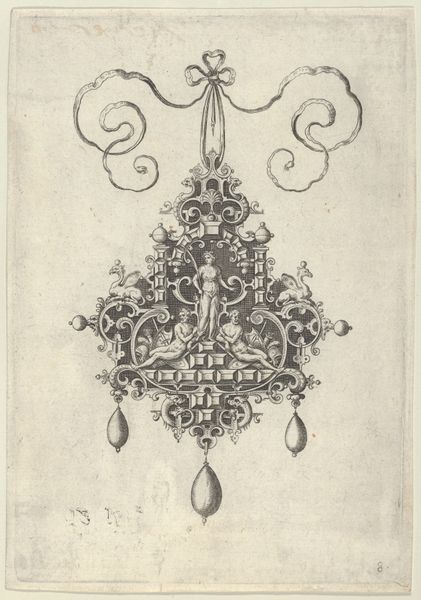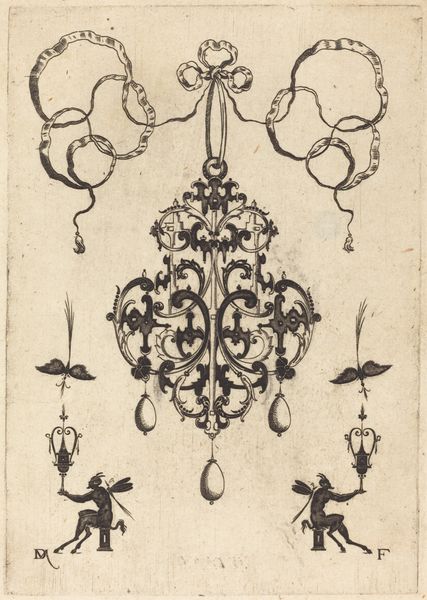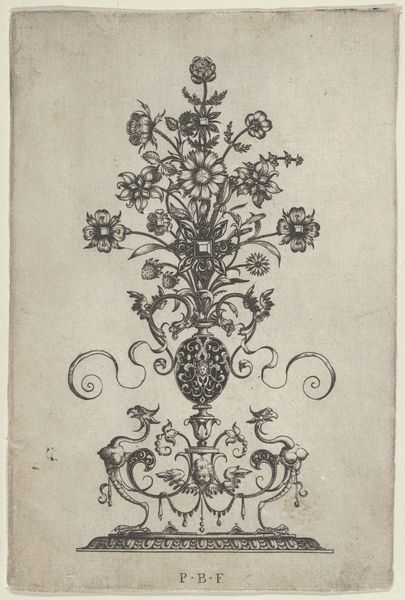
Large Pendant, Lower Left and Right Two Bunches of Grass, Flowers, and Fruit 1596
0:00
0:00
drawing, print, metal, engraving
#
drawing
#
pen drawing
# print
#
metal
#
form
#
11_renaissance
#
engraving
Copyright: National Gallery of Art: CC0 1.0
Curator: Looking at this intricate composition, I immediately think of visual tension; the contrasting weights and directional lines seem deliberately unsettling. Editor: Indeed. This engraving, "Large Pendant, Lower Left and Right Two Bunches of Grass, Flowers, and Fruit" by Daniel Mignot, created around 1596, is a testament to the aesthetics of the Renaissance. It showcases the period's penchant for both opulence and meticulous design. Curator: The work's visual rhythm—the elaborate central form contrasted against the symmetrical floral arrangements and suspended "fruit"—suggests an underlying structure of order, disturbed by an almost playful asymmetry. The serpentine ribbons introduce an unexpected, organic element. Editor: Precisely. Prints like this served a crucial function: disseminating design ideas. They acted as pattern books for artisans—metalworkers and jewelers particularly—fueling workshops across Europe. Mignot's skill was not merely artistic but also entrepreneurial. His prints facilitated commerce. Curator: It’s remarkable how the limited palette of engraving, simply black lines on a neutral ground, is able to create such a complex and decorative design. It makes one ponder how much detail our eyes fill in to imagine dimension. Editor: And it’s essential to recall the socio-political context. The rise of Protestantism saw shifts away from religious imagery in some regions. Ornamentation and design became arenas for artistic expression, subtly reflecting changing social mores. Consider, too, that such intricate jewelry was not mere adornment but badges of status, projecting the wealth and power of their wearers. Curator: It seems less an overt expression of meaning and more a dance of line and form. It's a fascinating look at abstract qualities embodied for decorative purposes. Editor: But even the abstract speaks, doesn’t it? These forms tell us about social aspiration, artisanal economies, and the Renaissance pursuit of beauty as a political project in itself. Curator: Thinking about the engraving just in terms of pure composition, there’s a constant negotiation between structure and exuberance. It's carefully designed chaos, and I admire the skillful execution. Editor: Agreed. What appears purely ornamental reveals itself as a looking glass into a complex moment in history, which enriches its impact all the more.
Comments
No comments
Be the first to comment and join the conversation on the ultimate creative platform.
